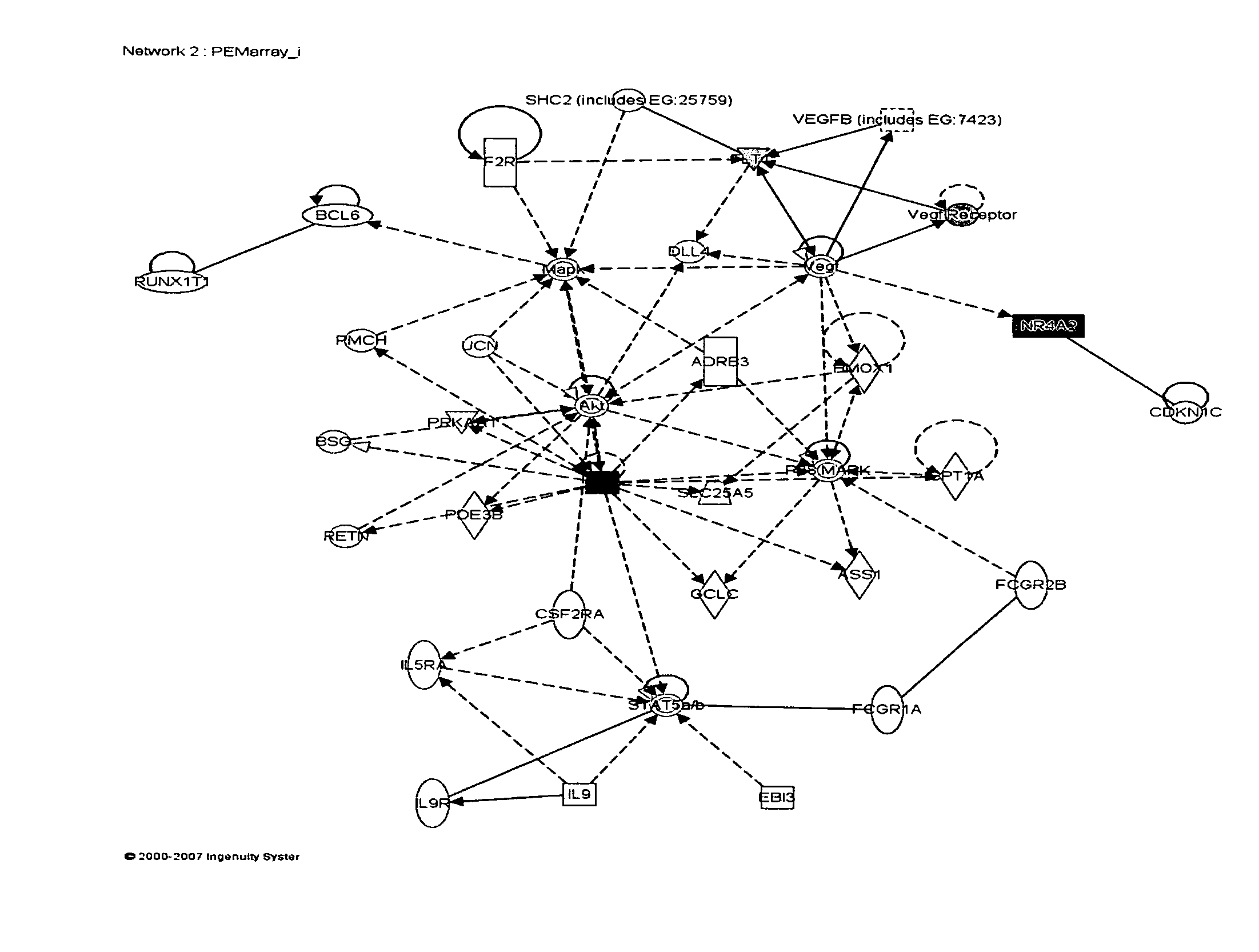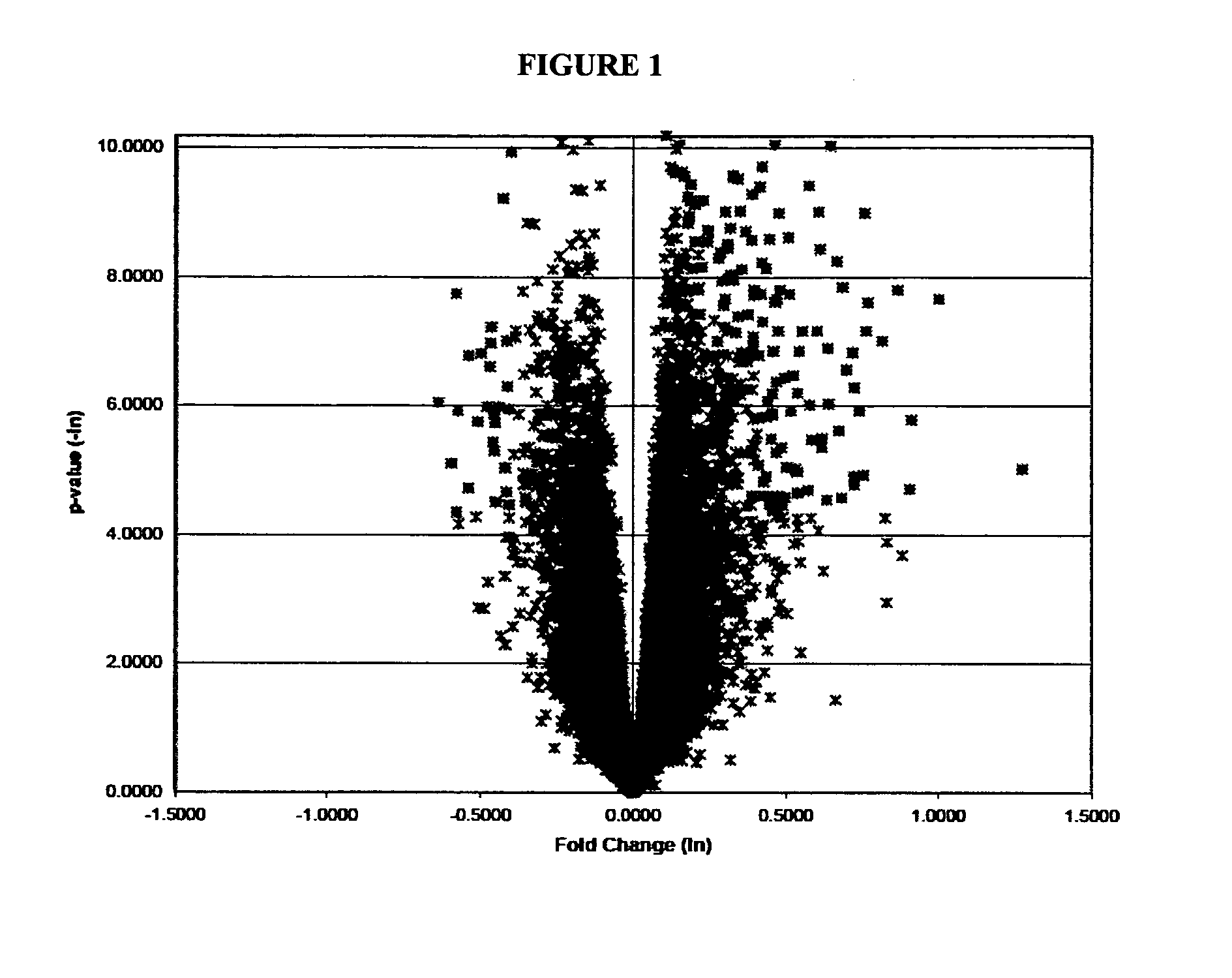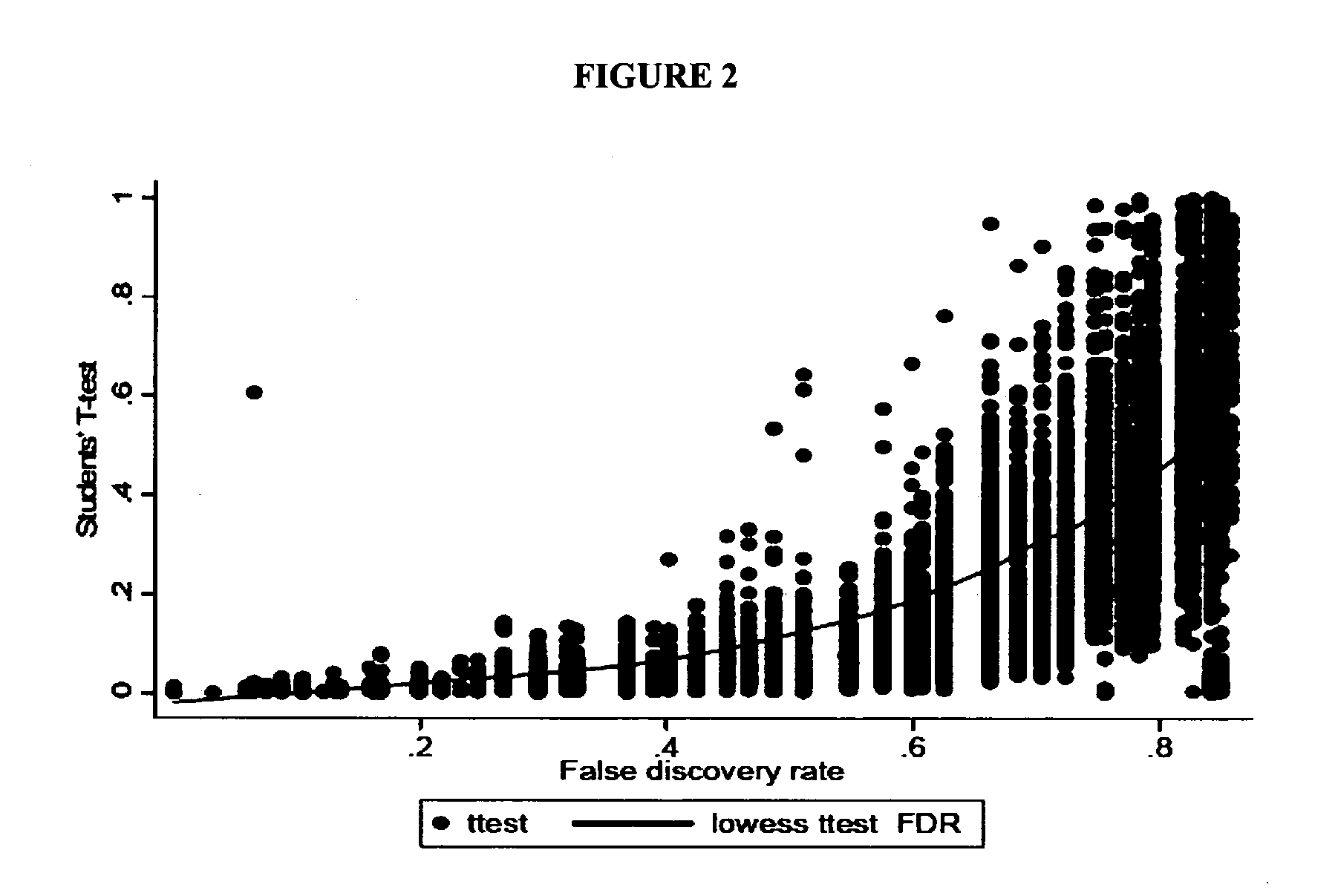Preterm delivery diagnostic assay
a preterm delivery and diagnostic assay technology, applied in the field of preterm delivery diagnostic assay, can solve the problems of a greater risk of mortality, and a wide range of medical and developmental complications, and achieve the effect of reducing the risk of preterm delivery
- Summary
- Abstract
- Description
- Claims
- Application Information
AI Technical Summary
Benefits of technology
Problems solved by technology
Method used
Image
Examples
example 1
[0141]Information was collected from subjects participating in an ongoing prospective cohort study conducted at the Center for Perinatal Studies (CPS) at Swedish Medical Center in Seattle, Wash. The Omega Study (5R01HD032562-10) was designed primarily to examine the metabolic and dietary predictors of preeclampsia, gestational diabetes, and other pregnancy outcomes. Briefly, Omega Study participants were recruited from women attending prenatal care at clinics affiliated with Swedish Medical Center. Women who initiated prenatal care prior to 20 weeks gestation were eligible to participate. Women were ineligible if they were younger than 18 years of age, did not speak and read English, did not plan to carry the pregnancy to term, did not plan to deliver at the research hospital, and / or were past 20 weeks gestation. Nine years after beginning recruitment, approximately 81% of approached women consented to participate and 96% were followed through pregnancy completion. ...
example 2
Global Gene Expression Profiling in Whole Blood: Obese & Lean Women in Early Pregnancy
[0144]Adiposity is consistently identified as an important risk factor of adverse pregnancy outcomes. Adipose tissue, once thought to be an inert depot of energy, is now recognized to exert considerable influence on glucose handling and other metabolic processes.
[0145]In this preliminary study, we investigated whether maternal pre-pregnancy obesity was associated with biologically relevant alterations of mRNA expression profiles of genes involved in endocrine, inflammatory and other processes. Maternal whole blood mRNA samples collected during early pregnancy (16 weeks on average) from 10 obese (BMI ≧30) and 10 lean women (BMI <20) were compared using Affymetrix Human Focus GeneChip arrays. The complete set of arrays was normalized and background corrected using GC-RMA. Array sensitivity was determined using a set of spiked controls and a lower-bound signal intensity threshold was established. Prob...
example3
Global Gene Expression Profiling in Placentas from Preeclampsia and Normotensive Patients
[0147]Preeclampsia is a pregnancy-related vascular disorder characterized by hypertension and proteinuria. The central pathology characterizing preeclampsia, failure of implantation due to impaired trophoblast invasion and endothelial dysfunction, involves the placenta. Various pathways including oxidative stress, inflammation, growth regulation, angiogenesis, tumor suppression, apoptosis, immune tolerance, coagulation and lipid metabolism have been shown to be relevant in the pathogenesis of preeclampsia.
[0148]We compared the global gene expression (˜22,000 genes) profiles of 36 placentas using oligonucleotide microarray technologies (18 preeclampsia cases and 18 normotensive term controls). RNA isolation and microarray analyses were completed. Statistical analyses were performed on natural log-transformed data.
[0149]Approximately 96.6% (21,250 of 22,000 genes on our oligonucleotide microarray ...
PUM
| Property | Measurement | Unit |
|---|---|---|
| fluorescent in situ hybridization | aaaaa | aaaaa |
| nucleic acid array assay | aaaaa | aaaaa |
| invasive cleavage structure assay | aaaaa | aaaaa |
Abstract
Description
Claims
Application Information
 Login to View More
Login to View More - R&D
- Intellectual Property
- Life Sciences
- Materials
- Tech Scout
- Unparalleled Data Quality
- Higher Quality Content
- 60% Fewer Hallucinations
Browse by: Latest US Patents, China's latest patents, Technical Efficacy Thesaurus, Application Domain, Technology Topic, Popular Technical Reports.
© 2025 PatSnap. All rights reserved.Legal|Privacy policy|Modern Slavery Act Transparency Statement|Sitemap|About US| Contact US: help@patsnap.com



